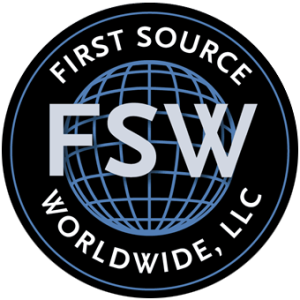Flooring Evolution Continues with Improved Flooring Products
Soft Surface
Today, carpet occupies less square footage in new and refurbished houses. But, higher end carpet products are on the rise due to the demand for sophisticated pattern styled products. Carpet products have also transformed to softer fibers like Triexta and Caress. These products are designed with unique yarns to enhance the appearance and feel.
Polyesters are now the largest part of residential carpet. This market focuses on and has increased awareness for soil protection and waterproof products both for hard and soft surface flooring. While higher end carpet is growing, there is a lot of pressure on lower and middle priced offerings due to the growth of polyester products.
Area rugs, a growth category for carpets, can be styled to complement all hard surface flooring. The rug categories are now becoming more of an accessory item at a lower price, rather than the tufted or hand-woven products from years past.
Hard Surface
Hard surface continues to grow at a fast pace, occupying more square footage with hardwood (solid and engineered), laminate, tile, stone, and resilient flooring.
A few years ago it looked as if hardwood floors would dominate hard surface with Chinese imports driving the commoditization. However, that growth has been greatly impacted by the multilayer flooring category, cushion vinyl, flexible LVT, and now to a more rigid composition called WPC, which didn’t exist in its current state five years ago. The resilient flooring segment continues to lead as the consumers hard surface choice in many spaces of the home. Today’s consumer is purchasing more hard surface products, as evident by the growth in luxury vinyl tile (LVT) and (WPC).
What is WPC?
Wood Plastic / Polymer Composite: While the word “wood” is in the name, most WPC products do not contain wood. WPC is a considered a composite material made of thermoplastics with filler, typically waterproof, rigid, and stable. WPC products are commonly referred to as enhanced vinyl plank, or luxury vinyl flooring.
US Floors which is now a part of Shaw Industries began the WPC era with the launch of COREtec. The company received a patent in 2015 that covers all engineered flooring products with a WPC core and veneer top layer with or without an attached backing. WPC is a new category in resilient flooring and its popularity will continue to transform the landscape of LVT, while impacting several other flooring categories in the future. Any time a product solves a problem, it seems to do well in the marketplace. One of the issues with flexible LVT is that there can be some telegraphing through to the surface from the subfloor. Therefore, there are limitations where flexible LVT can be installed. That is not the case with WPC.
How is WPC different from LVT?
The main difference is that WPC has a more rigid core layer and can go over most subfloors without much preparation. Traditional vinyl floors are flexible and any unevenness in the subfloor will transfer through to the surface. Compared to traditional glue-down LVT or solid-locking (click profile) LVT, the WPC products have a distinct advantage because the rigid core minimizes the imperfections in concrete or wooden subfloors. Additionally, WPC products being more rigid allows for longer and wider formats which improves installation for DYI and commercial installers.
WPC is still manufactured in the same manner as the other multilayered products where sub components are laminated together to create the finished product.
WPC shares the same attributes as Luxury Vinyl Tile. The veneer layers, the printed layer, and the performance layers are the same in the manufacturing process—with the core layer being the main difference. Both product categories are visually appealing, have attractive cost compared to wood and stone, lower maintenance, waterproof, easy to install, and readily available.
WPC is the most recent advancement to the resilient flooring category that addresses the current needs of the end user. With demand increasing and plants continuing to be built in the U.S. and abroad, the momentum should not slow any time soon.
The evolution continues.
If you’re interested in learning more, click the picture below to contact a First Source Worldwide representative.



